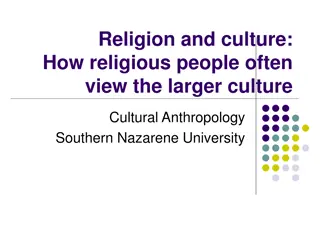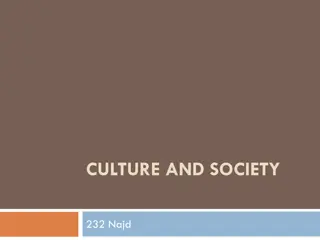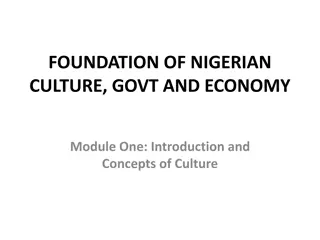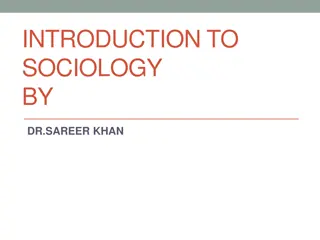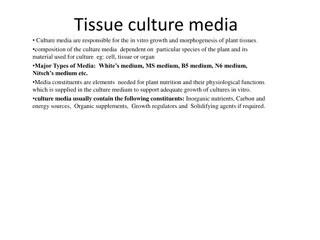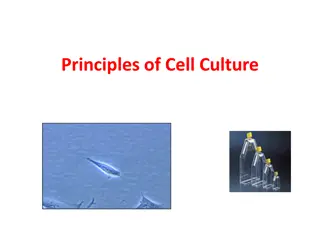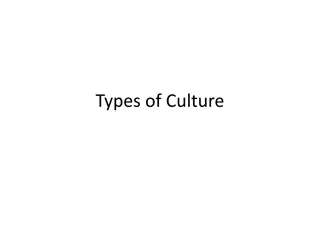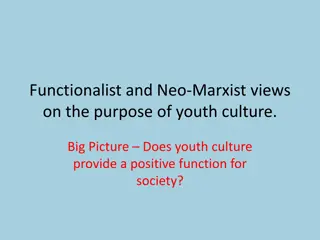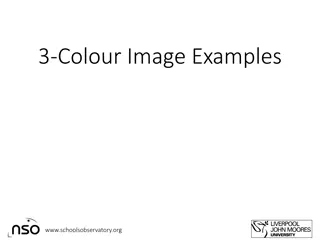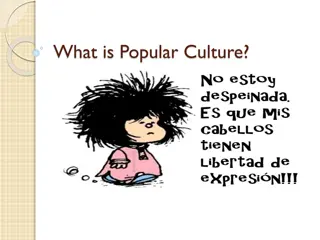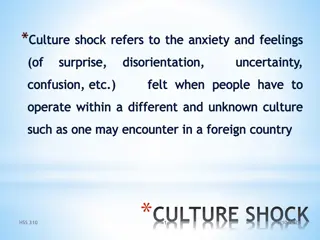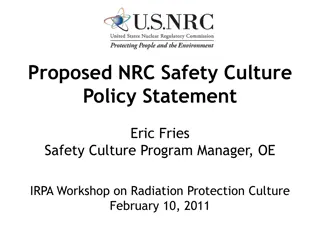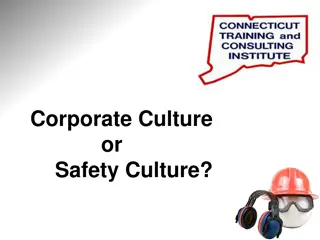Discovering the Eskimo Culture
This content delves into the world of the Eskimo people, exploring their origins, traditional practices, dwellings, clothing, family life, and more. Learn about the rich cultural heritage and debunk myths surrounding the Eskimo community through insightful narratives and historical accounts.
Download Presentation

Please find below an Image/Link to download the presentation.
The content on the website is provided AS IS for your information and personal use only. It may not be sold, licensed, or shared on other websites without obtaining consent from the author. Download presentation by click this link. If you encounter any issues during the download, it is possible that the publisher has removed the file from their server.
E N D
Presentation Transcript
The State of the Case Law in the Ninth Circuit By Sabrina Damast and Megan Brewer
PSG: witnesses against gang members in El Salvador Reserved the question of whether particularity and social visibility are valid criteria
PSG: wealthy, educated landowners in Colombia and Mexico Country conditions evidence demonstrates that FARC targets wealthy landowners in Colombia and that cartels in Mexico target families who have been land owners for generations Rejected the BIA s determination that the proposed group was too diverse or broad to be sufficiently particularized with regard to other characteristics (other than land ownership) If landowners are per se a social group under BIA precedent, the addition of another characteristic (wealth or educational level) does not undermine the validity of the group
W-G-R- proposed social group: former members of the Mara 18 gang in El Salvador who have renounced their gang membership M-E-V-G- proposed social group: Honduran youth who have been actively recruited by gangs but who have refused to join because they oppose gangs
Does not require ocular visibility in society as such, renamed to social distinction. Instead, it requires that the society in question perceive the proposed social group as a group. Persecutor s perception may be relevant, but is not sufficient to demonstrate requisite distinction. Persecutor s actions may cause the individuals in the group to experience a sense of group and for society to perceive the group as distinct in some manner.
Country conditions reports, expert witness testimony, and press accounts of discriminatory laws and policies, historical animosities, and the like may establish that a group exists and is perceived as distinct or other in a particular society.
Particularity is a question of delineation, meant to set an outer boundary on the membership of a proposed group.
The Board recognized in both W-G-R- and M-E-V-G- that both social distinction and particularity must be analyzed in the context of the society in question, and thus, a group that is not cognizable in one society may still be cognizable in another.
Group is too diffuse, broad, and subjective to meet the particularity requirement because it could include person of any age, sex, or background. It is not limited to those who have had a meaningful involvement with the gang and would thus consider themselves and be considered by others as former gang members. BIA also found that it lacked social distinction
Board made it pretty clear that it doesnt think that widespread gang violence will serve as a ground for asylum. Although certain segments of a population may be more susceptible to one type of criminal activity than another, the residents all generally suffer from the gang s criminal efforts to sustain its enterprise in that area. A national community may struggle with significant social problems resulting from gangs, but not all societal problems are bases for asylum. Board noted that it was not rejecting all factual scenarios in gangs because PSG determinations must be made on a case by case basis. Board remanded M-E-V-G-, most likely because the Third Circuit had previously rejected the Board s definition of social visibility as unreasonable, and now the Board wanted to see if its new definition of social distinction would withstand scrutiny
IJ found Pirir-Boc to be a member of the group of individuals who took concrete steps to oppose gang membership and gang authority because he persuaded his brother to leave the gang and refused to join the gang. By doing so, he allied himself with a particular social group of persons directly in opposition to gang activities and gang membership. This group includes individuals who participate in concerted efforts in Guatemala to combat gang violence. The Board reversed the IJ s decision, finding the proposed group not meaningfully distinguishable from the one rejected in Matter of S-E-G- (youths who have resisted gang recruitment).
The Ninth Circuit rejected the Boards decision, noting that the Board may not reject a group solely because it had previously found a similar group in a different society to lack social distinction or particularity, especially where . . . it is presented with evidence showing that the proposed group may in fact be recognized by the relevant society. Evidence of social distinction may include evidence that a given society has adopted strategies for combating gang violence (i.e. anti-gang legislation, social rehabilitation programs, and gang prevention programs) that would result in social recognition of a proposed group. The Ninth Circuit tacitly approved of the IJ s findings on Pirir-Boc s PSG, noting that the concrete and open steps Pirir-Boc took in opposition to the gang may fall within the framework of its decision in Henriquez-Rivas.
Board applied the revised social distinction and particularity requirements to the group comprised of married women in Guatemala who are unable to leave their relationship. Shared immutable characteristics: gender AND inability to leave a marriage Particularity: the terms married, women, and unable to leave the relationship have commonly accepted definitions within Guatemalan society. Social distinction: relevant evidence includes whether the society in question recognizes the need to offer protection to victims of domestic violence, including whether the country has criminal laws designed to protect domestic abuse victims, whether those laws are effectively enforced and other sociopolitical factors. In this case, there was unrebutted evidence that Guatemala has a culture of machismo and family violence, and that there is a lack of police protection for victims of domestic violence.
Family is the quintessential social group, even under the refined framework articulated in M-E-V-G- and W-G-R-. Recognized that persecutors are more likely to identify individual family members as part of a PSG when familial ties are linked to race, religion, or political affiliation, but declined to hold that the family social group must be intertwined with another protected ground to be cognizable.
8 CFR 1208.16(c)(2): more likely than not that applicant will be tortured. CAT: substantial grounds for believing that he would be in danger of being subjected to torture. Rodriguez-Molinero v. Lynch, N. 15-1860, A075- 614-869, (7th Cir. Dec. 17, 2015): more likely than not cannot be taken literally because it would contradict the Convention and because there is no data and statistical methodology to determine whether the applicant has at least a 50.1 % chance of being tortured.
Maldonado v. Lynch, 786 F.3d 1155 (9th Cir. 2015): internal relocation must be considered, but it is neither the applicant s burden to prove it is impossible, nor does the burden shift to the government. Quijada-Aguilar v. Lynch, 799 F.3d 1303 (9th Cir. 2015): BIA must consider all relevant evidence of risk of torture, including family affiliation.
Andrade v. Lynch, 798 F.3d 1242 (9th Cir. 2015) Affirming denial of CAT where BIA took note of tattoos, petitioner was not a former gang member, and tattoos were not gang- related. Contrasting with Cole v. Holder, 659 F.3d 762 (9th Cir. 2011), where expert witness testified that Honduran former Crips member had 75% chance of being killed by police or vigilantes because of his gang-related tattoos Avendano-Hernandez v. Lynch, 800 F.3d 1072, 1082 (9th Cir. 2015) BIA erroneously concluded that petitioner had not suffered past torture BIA misapplied country conditions evidence of legislation affecting gay men and lesbians and failed to consider evidence of violence against transgender women BIA misread the record in concluding that police abuses against transgender women only occurred in the context of drug trafficking
Madrigal v. Holder, 716 F.3d 499 (9thCir. 2013) Viewed in context, [the petitioner] s belief that the incidents are attributable to Los Zetas is more than pure speculation. Because his explanation for the events is plausible and supported by circumstantial evidence, it must be credited in the absence of an explanation that is at least as plausible Garcia v. Holder, 756 F.3d 885, 887-88 (5th Cir. 2014) Based on the sequence of events, one possible conclusion is that the men who threatened and beat Garcia on each occasion were either police officers or other men working in concert with some other government source... If there were public officials supplying the perpetrators with information that they obtained as part of their official duties, government acquiescence could be shown. the alleged active involvement of public officials acting in their official capacity and the close temporal proximity between Garcia's contact with public officials and the subsequent threats and beatings support his assertions and warrant further review.
Severity of harm Intent Custody or physical control Not lawful sanctions Torturer is a public official acting in an official capacity OR torture is inflicted at the instigation of or with the consent or acquiescence of a public official acting in an official capacity 8 C.F.R. 1208.18
CAT: any act by which severe pain or suffering is intentionally inflicted on a person for such purposes as obtaining from him or a third person information or a confession, punishing him for an act he or a third person has committed or is suspected of having committed, or intimidating or coercing him or a third person, or for any reason based on discrimination of any kind 8 CFR 1208.18(a)(5) In order to constitute torture, an act must be specifically intended to inflict severe physical or mental pain or suffering. An act that results in unanticipated or unintended severity of pain and suffering is not torture. Villegas v. Mukasey, 523 F.3d 984, 989 (9th Cir. 2008) : we hold that to establish a likelihood of torture for purposes of the CAT, a petitioner must show that severe pain or suffering was specifically intended-that is, that the actor intend the actual consequences of his conduct, as distinguished from the act that causes these consequences.
Azanor v. Ashcroft, 364 F.3d 1013 (9th Cir. 2004) (no need to show that torture would be under public officials' custody or physical control; a petitioner may qualify by showing that he would suffer torture while under private parties' custody or physical control) What is custody or physical control? Not being gassed by fumigants targeting drug crops Arias v. Dyncorp, 517 F.Supp.2d 221 (D.D.C. 2007) Not being subjected to Agent Orange in Vietnam In re Agent Orange Product Liability Litigation, 373 F.Supp.2d 7, 112 (E.D.N.Y. 2005) Comollari v. Ashcroft, 378 F.3d 694, 697 (7th Cir. 2004): Probably more often that not the victim of a murderer is within the murderer's physical control for at least a short time before the actual killing, but that would not be true if for example the murderer were a sniper or a car bomber.
Habtemicael v. Ashcroft, 370 F.3d 774 (8th Cir. 2004) IJ should have considered whether the sanctions imposed on military deserter were imposed by a legitimate government authority
Rodriguez-Molinero v. Lynch, N. 15-1860, A075-614-869, (7th Cir December 17, 2015) IJ erred in considering whether police officers who torture the petitioner were rogue officers. It is irrelevant whether the police were rogue (in the sense of not serving the interests of the Mexican government) or not. The petitioner did not have to show that the entire Mexican government is complicit in the misconduct of individual police officers.
Madrigal v. Holder, 716 F.3d 499, 509 (9thCir. 2013). Although the public official must have awareness of the torturous activity, he need not have actual knowledge of the specific incident of torture. Acquiescence also does not require that the public official approve of the torture, even implicitly. It is sufficient that the public official be aware that torture of the sort feared by the applicant occurs and remain willfully blind to it Importantly, an applicant for CAT relief need not show that the entire foreign government would consent to or acquiesce in his torture. He need show only that a public official would so acquiesce.
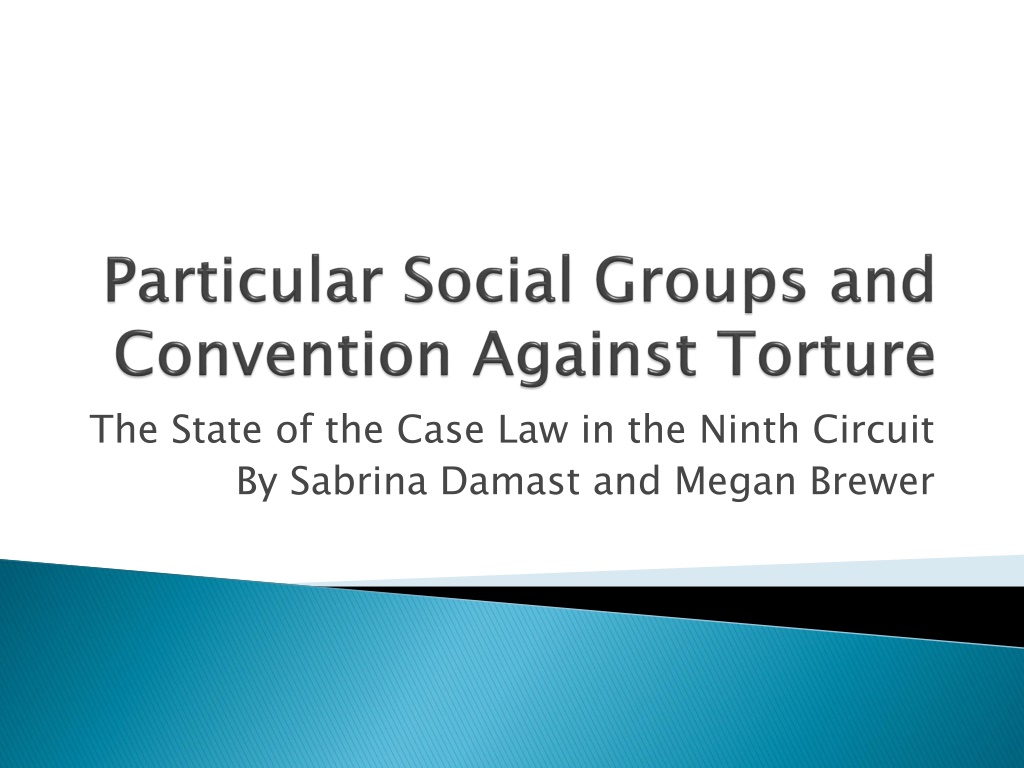
 undefined
undefined









